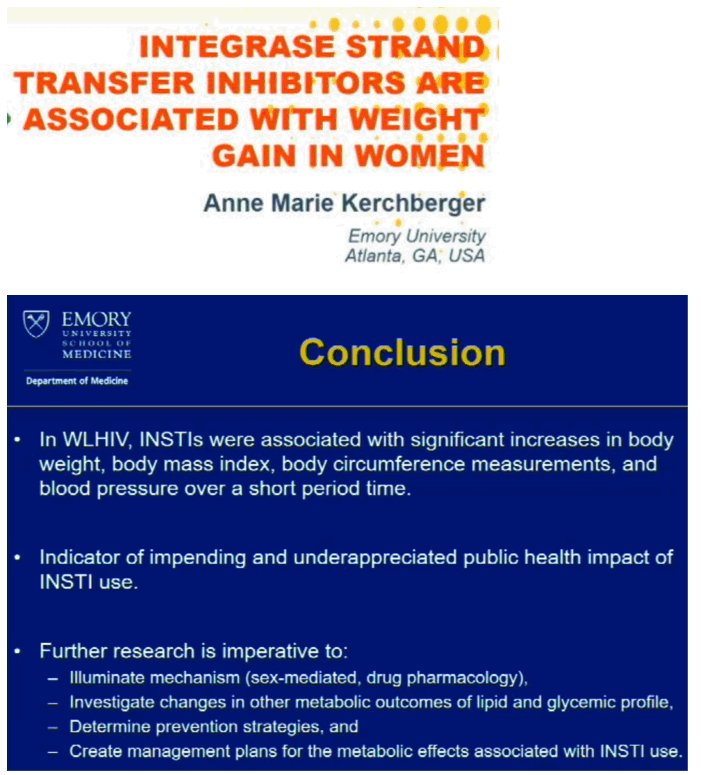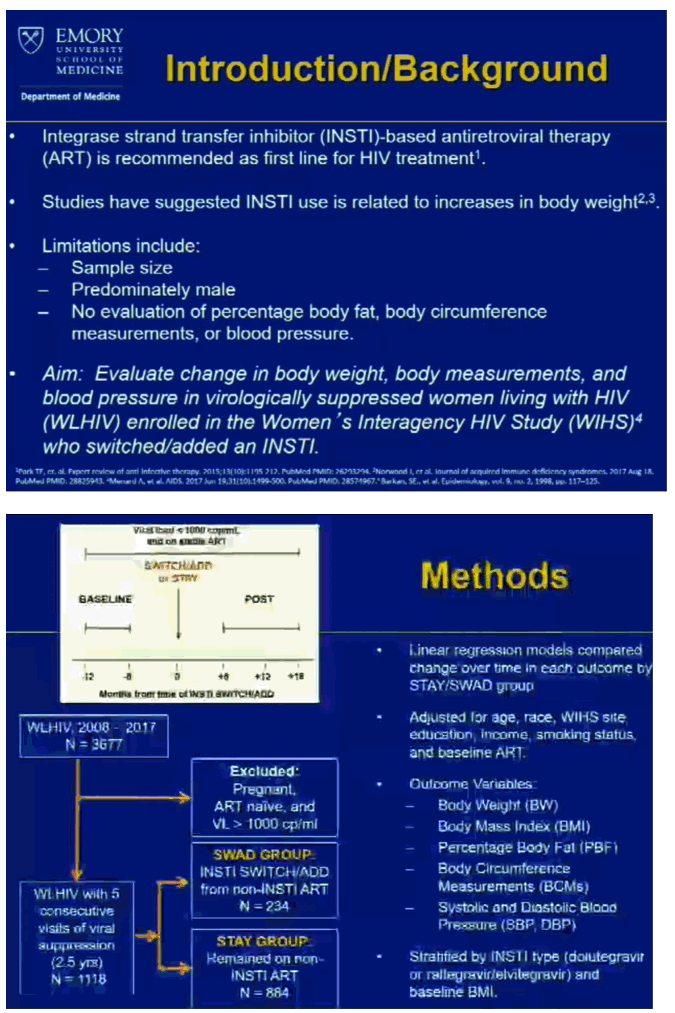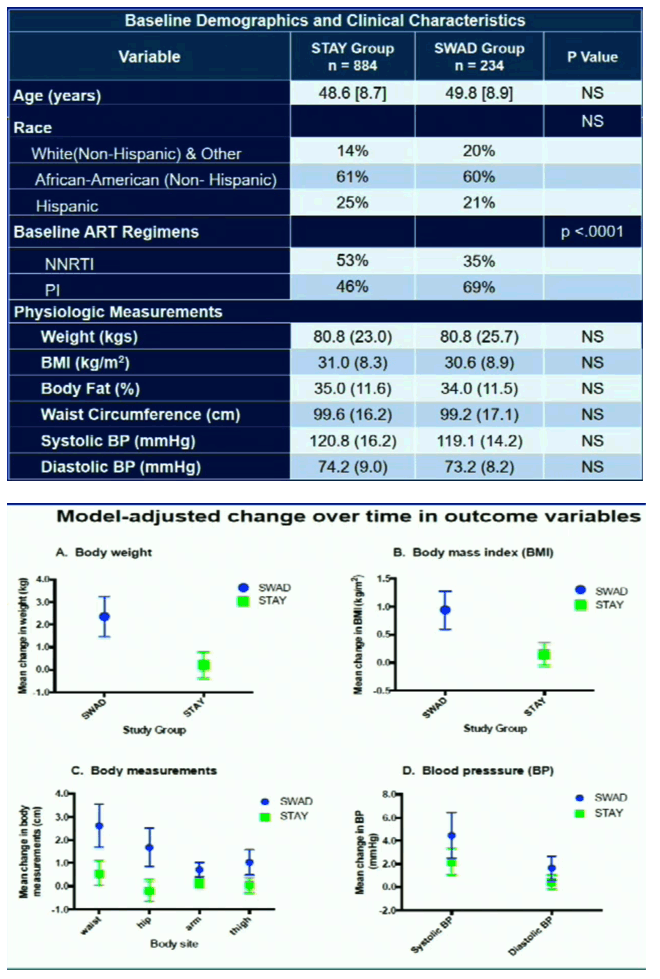 |
 |
 |
| |
INTEGRASE STRAND TRANSFER INHIBITORS
ARE ASSOCIATED WITH WEIGHT GAIN IN WOMEN
|
| |
| |
Reported by Jules Levin
CROI 2019 March 4-7 Seattle
Anne Marie Kerchberger1, Anandi N. Sheth1, Christine D. Angert1, Cyra Christina Mehta1, Nathan A. Summers1, Igho Ofotokun1, Deborah Gustafson2, Sheri Weiser3, Seble Kassaye4, Deborah Konkle-Parker5, Anjali Sharma6, Adaora Adimora7, Hector Bolivar8, Cecile D. Lahiri1
1Emory University, Atlanta, GA, USA,2SUNY Downstate Medical Center, Brooklyn, NY, USA,3University of California San Francisco, San Francisco, CA, USA,4Georgetown University, Washington, DC, USA,5University of Mississippi, Jackson, MS, USA,6Albert Einstein College of Medicine, Bronx, NY, USA,7University of North Carolina at Chapel Hill, Chapel Hill, NC, USA,8University of Miami, Miami, FL, USA
webcast link to themed Discussion
http://www.croiwebcasts.org/console/player/41233?mediaType=slideVideo&

Program abstract
Integrase strand transfer inhibitor (INSTI)-based antiretroviral therapy (ART) is recommended first line for HIV treatment. Studies have suggested individuals who switch to INSTI-ART experience increase in body weight. These changes may be more prominent in women. We evaluated the effect of INSTI use on body weight and measurements in HIV+ women.
Data were collected from 2008-2017 from HIV+ women enrolled in the Women's Interagency HIV Study (WIHS) with viral load 1118 WIHS participants (884 STAY and 234 SWAD) were followed for average 2.0 (+/- 0.1) years; mean baseline age was 48.8 (+/- 8.8) years, 61% were Black, and mean CD4 669 (+/- 294) cells/mm3. At baseline, women in SWAD group were more likely to be on protease inhibitor-ART but did not differ from STAY by demographics or body measurements. Compared to the STAY group, the SWAD group experienced 2.14 kg greater increase in weight, 0.78 kg/m² greater increase in BMI, 1.35% greater increase in PBF, and 2.05, 1.87, 0.58, and 0.98 cm greater increases in waist, hip, arm, and thigh circumference, respectively (Table 1). Women in SWAD also had 2.24 and 1.17 mmHg greater change in systolic and diastolic BP. New-onset DM occurred in 4.5% (n=8) in SWAD and 2.2% (n=15) in STAY, p=0.11. No significant differences in outcomes were observed by INSTI type.
In a longitudinal study of HIV+ women on ART, a switch to INSTI was associated with significant increases in body weight and measurements, body fat, and blood pressure compared to those remaining on non-INSTI ART. Further research is urgently needed for prevention and management of metabolic effects with INSTI use.


|
| |
|
 |
 |
|
|